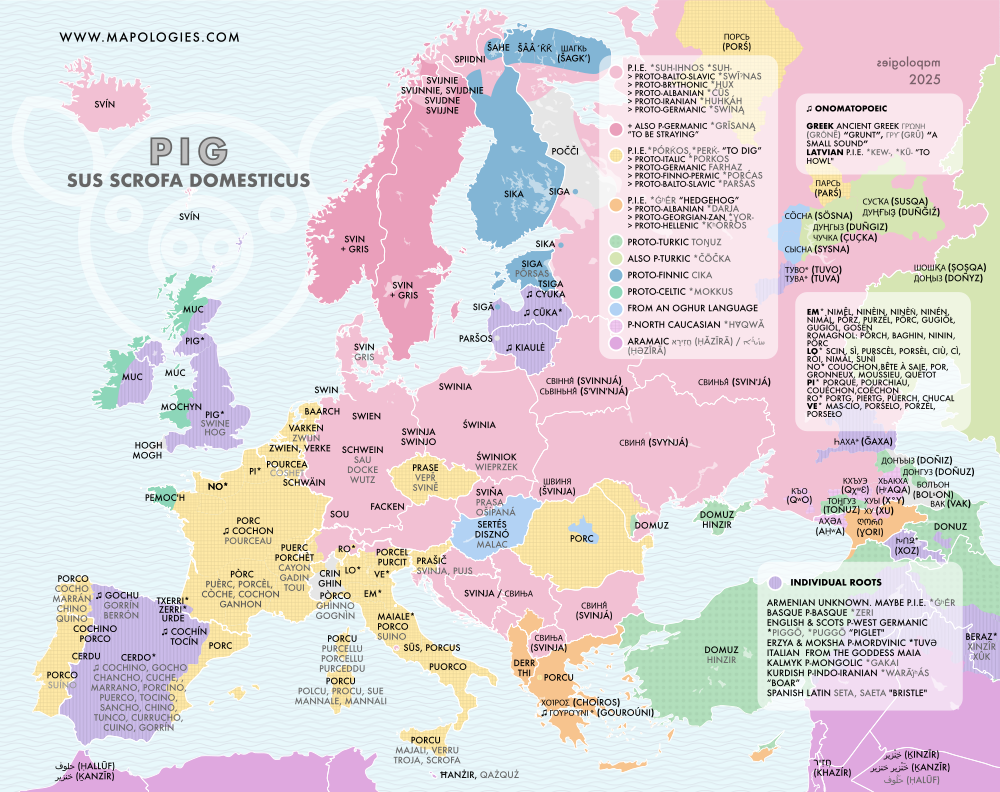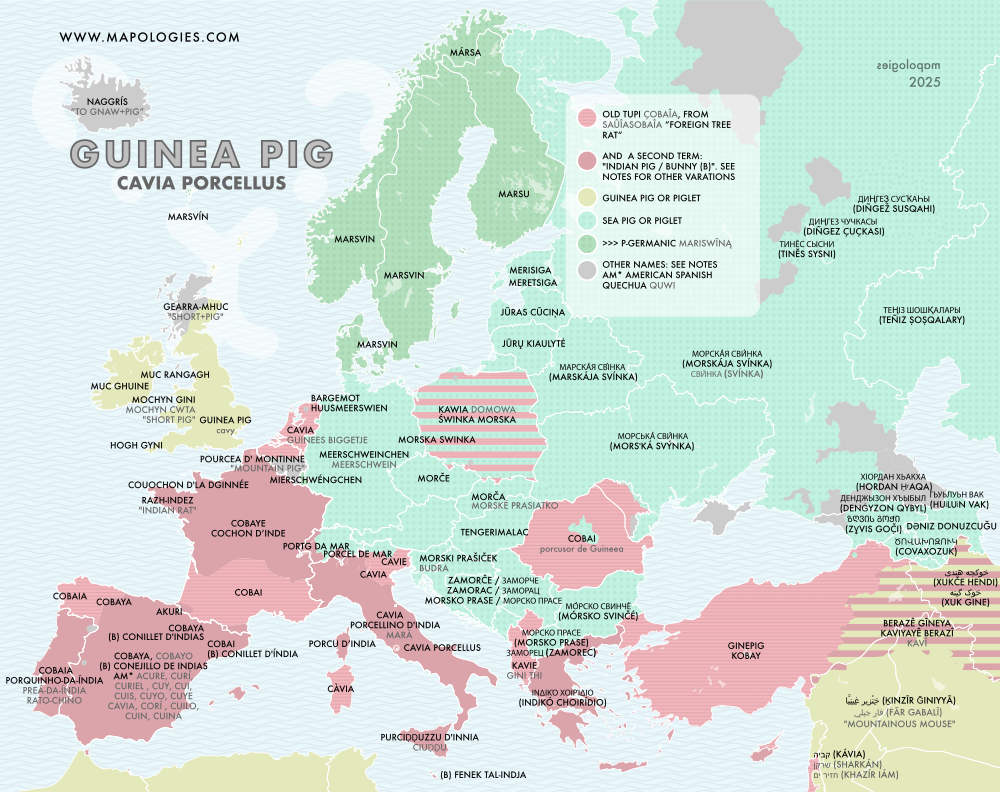In this post, we’re going to take a fun look at the quirky origins of animal names and how different animals are seen in unique ways, which gives them their special names.
Armadillo

🎉 QUIZ TIME, FRIENDS! 🎉
🔍 Thinking Time 🔍
What do these four fabulous words have in common: Tortilla, Vanilla, Quesadilla, and Armadillo?⏳ Tick… tock… tick… tock… ⏳
🎊 Ding ding ding! Got it?🎊
Here comes the reveal…📣 They all end with a spicy twist — “-illa” or “-illo”! Spanish words! See also the map of armadillo in Spanish with all the varieties.
Let’s strip off the armor!
When the first European sailors arrived in South America, they encountered a curious little creature covered in bony plates. They named it armadillo, which literally means “little armored one” — a diminutive of the Spanish word armado “armored”. It’s a linguistic cousin to English words like arm, armor, and even armada.
Meanwhile, other languages created calques — literal translations that capture the meaning rather than the sound. In Polish, for example, the armadillo is called pancernik, a diminutive of pancerz “armor”.
Back to the jungle
However, long before the Europeans showed up, indigenous peoples of South America had their own names. In Guaraní, the armadillo was called tatu — a word later borrowed into Spanish, French, and even Hungarian!
Notch on your belt
Take a look at the armadillo’s body and you’ll notice it’s wrapped in banded plates — almost like it’s wearing a belt! Some languages highlight this unique feature: Czech: pásovec (from pás – belt), German: Gürteltier (literally “belt animal”), or Estonian: vöölane (from vöö – belt)
Cat

Duck

Hedgehog

Although pigs and hedgehogs are biologically distinct animals, many languages, including English, perceive a curious linguistic connection between them. This most common linguistic root traces back to the ancient Proto-Indo-European language, which underlies vocabulary across most Slavic, Germanic, and Baltic languages, and even extends as far as Ossetian and Armenian. In contrast, Romance languages developed their own separate etymological roots for these animals, as did the Turkic language family.
Pig

Meat & trufles
In English, the meat of the pig is called pork. Interestingly, not all languages make a distinction between the animal and its meat. It is particularly fascinating that pork has close relatives in other languages, such as French and Catalan porc, and Italian and Portuguese porco, all of which come from Latin porcus. There are also more distant relatives, like Czech prase or even Udmurt pars. The origin of these words goes back to the Proto-Indo-European root porkos, meaning “pig” and “digger” which itself comes from the verb perk — “to dig.” This makes sense, since pigs naturally use their snouts to dig up roots and insects, and thanks to their excellent sense of smell, they are even used to find truffles.
Guinea pig

Guinea or India pig?
In English, the term “Guinea“ was commonly used to describe far-off or exotic places, not specifically the West African country of the same name. Another possibility is that “Guinea” in this context is a corruption of “Guiana”, a region in northern South America—which aligns more closely with the guinea pig’s true native range. Interestingly, some languages associate the animal not with Guinea or South America, but with India. For example, in French it is called cochon d’Inde (“pig of India”), and in Greek ινδικό χοιρίδιο (indikó choirídio), meaning “little Indian pig”.
Sea Pigs
Because guinea pigs were brought to Europe by sea, many languages reflect that with names meaning “sea pig”: In German, the animal is called Meerschweinchen—literally “little sea pig.” In some Nordic tongues, it’s marsvin, a term that come from Proto-Germanic mariswīnō (from mari- meaning “sea” and swīn- meaning “pig”).
Rabbits or Pigs?
But why the association with a pig? This is likely due to the guinea pig’s plump, rounded body and its high-pitched squeals, which resemble those of a young piglet. However, not all languages make this comparison. In some, the guinea pig is likened instead to a rabbit. For instance, in Spanish, it is called conejillo de Indias (“little rabbit of the Indies”), while in Maltese, the name fenek tal-Indja translates as “Indian rabbit.”
What were they originally called?
Guinea pigs are native to the Andes, where they were domesticated thousands of years before European explorers arrived. The names used in this region reflect deep-rooted Indigenous traditions. In Quechua, they are known as quwi or jaca. With the arrival of the Spanish in South America, the term cuy or cuyo became widespread, especially in Ecuador, Peru, and Bolivia, where the animals remain an important part of local cuisine and culture.
In many Romance languages, the words cobaya (Spanish), cobaye (French), and cobaia (Portuguese) are commonly used. These terms likely originate from a word in Tupi, an Indigenous language of the Amazon, reflecting early colonial contact and linguistic borrowing during the European exploration of South America.



